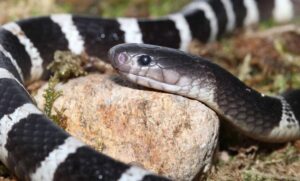Unlike venomous snakes that possess deadly venom, pythons use their massive size and immense constricting force to kill. Pythons typically hunt by coiling their bodies around their prey and using their muscular strength to crush bones and internal organs before eating. Numerous cases of pythons killing and eating people have been recorded. Here are the Top 5 Dangerous Pythons in the World. Let’s explore them with KnowAllAnimals!
1. Top 5 Dangerous Pythons in the World – Nature’s Silent Predators
In the world of snakes, pythons may not have venom, but they possess terrifying strength. They kill their prey by suffocating them with a crushing grip, demonstrating the brutal and fearsome power of nature. Let’s discover the five most dangerous pythons on the planet, where strength and silence become formidable weapons for survival.
1.1. Burmese Python (Python molurus)
- Kingdom: Animalia
- Phylum: Chordata
- Class: Reptilia
- Order: Squamata
- Suborder: Serpentes
- Family: Pythonidae
- Genus: Python
- Species: P. bivittatus
Many pythons rely on their immense size and body weight to constrict their prey. The Burmese python is one of them, capable of growing to over 7 meters (23 feet) long and weighing 100 kg (220 lbs).
In the 1970s, this giant snake became a popular and exotic pet in the United States. However, they grew too large for their owners to handle and were released into the wild.
This led to a rapid proliferation of new generations of pythons, which have become one of the most dangerous invasive species in the world, harming many native animals.
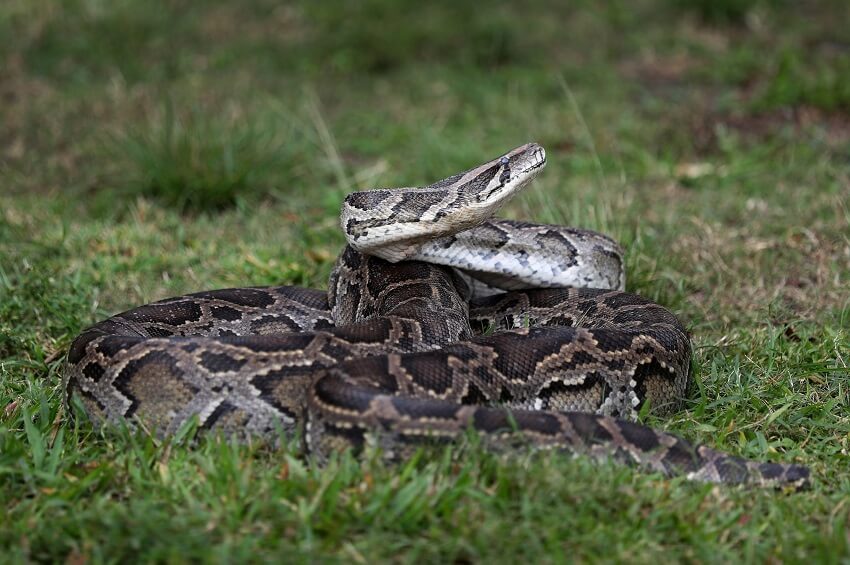
1.2. African Rock Python (Python sebae)
- Kingdom: Animalia
- Phylum: Chordata
- Class: Reptilia
- Order: Squamata
- Suborder: Serpentes
- Family: Pythonidae
- Genus: Python
- Species: P. sebae
The African Rock Python is a deadly predator that once dominated a large part of sub-Saharan Africa. This is the largest snake in Africa, capable of reaching a maximum length of nearly 6 meters (20 feet).
They easily adapt to disturbed habitats and are therefore often found around human settlements.
However, wildlife experts strongly advise against snake enthusiasts keeping these giant creatures as pets due to their dangerous nature. The African Rock Python is considered highly aggressive and a voracious feeder. On multiple occasions, tribal residents have reportedly cut open these pythons and recovered human remains.
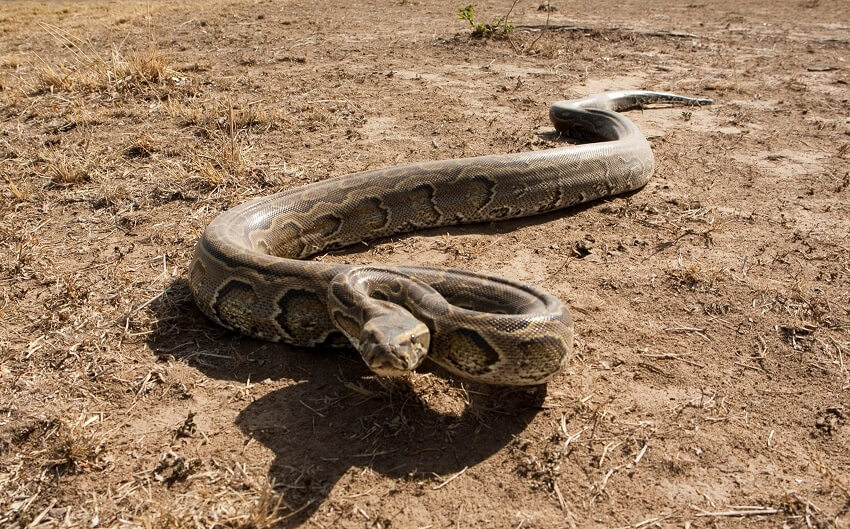
1.3. Southern African Python (Python natalensis)
- Kingdom: Animalia
- Phylum: Chordata
- Class: Reptilia
- Order: Squamata
- Suborder: Serpentes
- Family: Pythonidae
- Genus: Python
- Species: P. natalensis
This is the southern relative of the African Rock Python, known to be endemic to the water-rich regions of central Africa south of Ethiopia.
With adults reaching up to 5 meters (16 feet) in size, the Southern African Python typically hunts antelopes, warthogs, and even crocodiles.
Local people are also particularly wary of this python, as it can attack and kill humans.
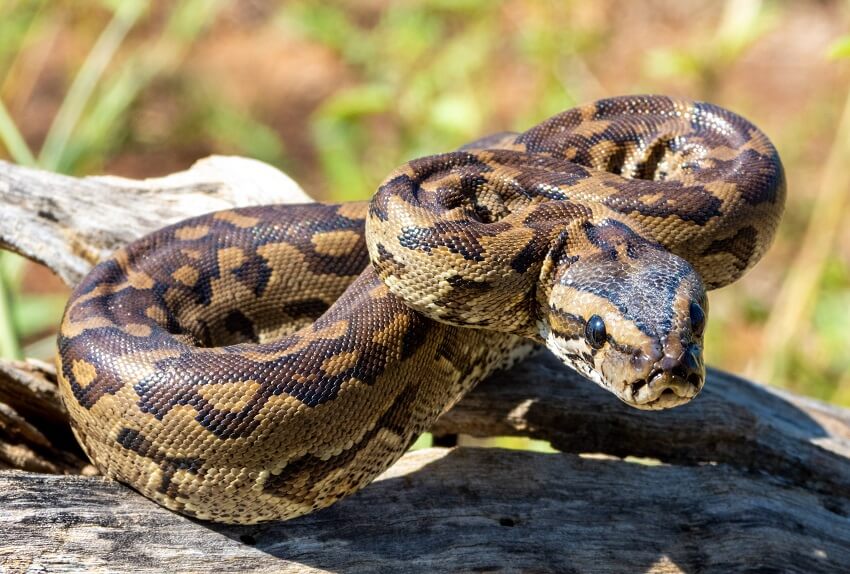
1.4. Boa Constrictor (Boa constrictor)
- Kingdom: Animalia
- Phylum: Chordata
- Class: Reptilia
- Order: Squamata
- Suborder: Serpentes
- Family: Boidae
- Genus: Boa
- Species: B. constrictor
The Boa Constrictor can reach a maximum body length of 4 meters (13 feet). They typically hunt birds, lizards, and small mammals, but even a human would have a hard time wrestling with these giants. The boa constrictor’s powerful muscles allow it to exert immense pressure, and prey is often killed within minutes. This is also one of the most commonly kept pet snakes in the world.
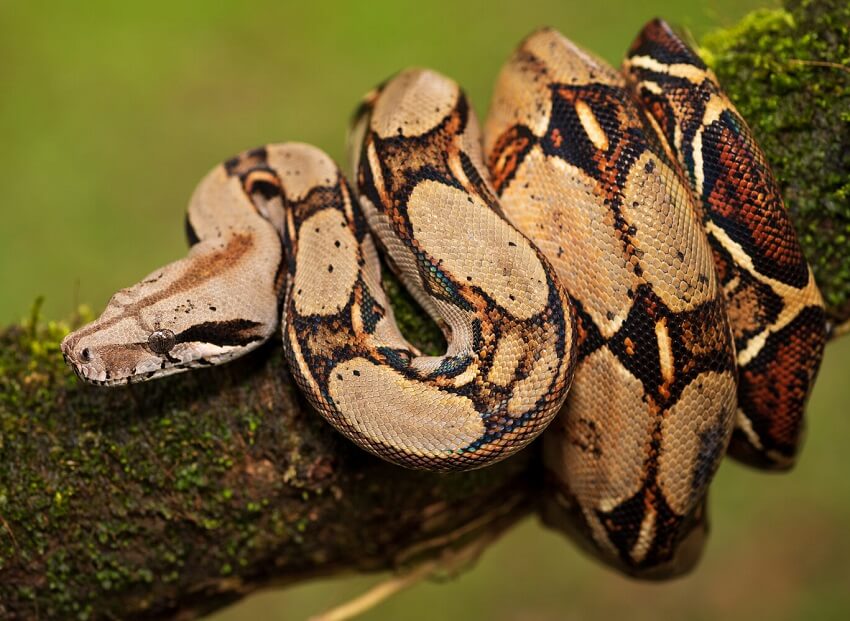
1.5. Yellow Anaconda (Eunectes notaeus)
- Kingdom: Animalia
- Phylum: Chordata
- Class: Reptilia
- Order: Squamata
- Suborder: Serpentes
- Family: Boidae
- Genus: Eunectes
- Species: E. notaeus
The Yellow Anaconda (also known as the golden anaconda) is a large python species that lives in the Amazon River basin in South America. They are well-adapted to this environment, able to swim at a speed of 20 km/h (12.4 mph) and stay submerged for up to 20 minutes.
Yellow anacondas spend most of their time swimming along rivers in search of food. They are typically solitary and quite shy, so they are not often seen.
With a length of about 3.5 meters (11.5 feet) as an adult, this python usually hunts fish and turtles underwater. However, they can also come ashore to take down small deer and other mammals. In captivity for pets or research purposes, the yellow anaconda is considered to have unpredictable behavior and can be dangerous to humans.
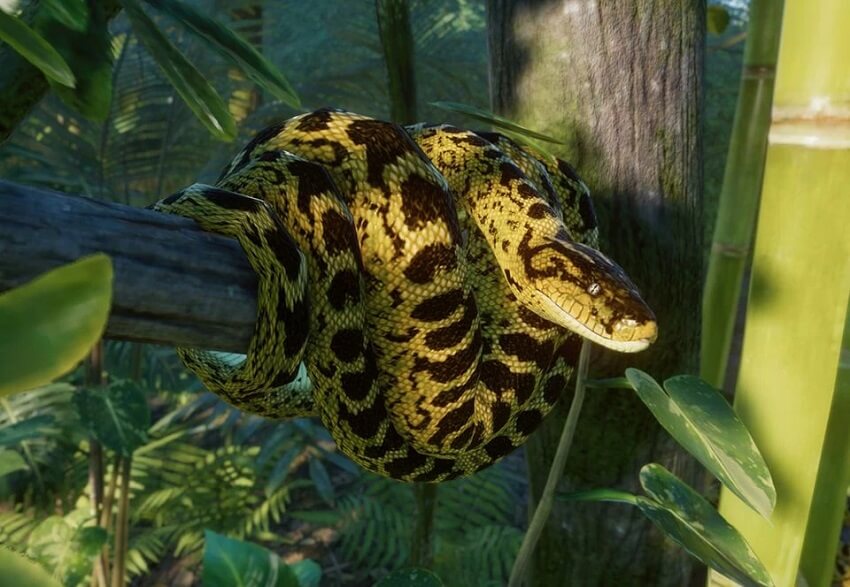
2. FAQs
1. Are pythons venomous?
No. Pythons are not venomous, but they kill their prey by wrapping around it, causing asphyxiation and death.
2. Which is the largest python in the world?
The Reticulated Python (Python reticulatus) is considered the world’s longest python, capable of reaching a length of over 9 meters (30 feet).
3. Do pythons attack humans?
Yes, but it is rare. There have been documented cases of large pythons, such as the Reticulated Python or the Burmese Python, attacking and swallowing people.
4. Where are the most dangerous pythons found?
Mainly in Southeast Asia, South Asia, Africa, and South America—regions with tropical climates that are favorable for pythons to live.
5. What can people do to avoid python attacks?
You should avoid approaching pythons in the wild, not provoke them, and be cautious when entering dense forests or areas where large snakes are known to live.
The world’s most Dangerous Pythons may not have venom, but their muscular strength and brutal hunting methods make them nature’s “silent predators.” Understanding their characteristics and habitats helps us satisfy our curiosity while increasing our awareness when encountering these giant reptiles. Let’s appreciate them and keep a safe distance, as every species has a role to play in the ecosystem that humans need to respect and protect.



